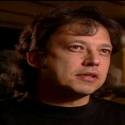Top 10 Mystery Animals of Africa
Posted by: John Kirk on January 11th, 2015
Over the years my friends and I who have combed the rivers, swamps and savannahs of Africa in search of animals that remain elusive to this day.
My great friend Bill Gibbons has compiled his top ten list of animals that are sometimes so dangerous to approach that doing so would be absolute folly.
This video’ll give you an idea of the sorts of dangerous creatures we could potentially encounter.
About John Kirk
One of the founders of the BCSCC, John Kirk has enjoyed a varied and exciting career path. Both a print and broadcast journalist, John Kirk has in recent years been at the forefront of much of the BCSCC’s expeditions, investigations and publishing. John has been particularly interested in the phenomenon of unknown aquatic cryptids around the world and is the author of In the Domain of the Lake Monsters (Key Porter Books, 1998).
In addition to his interest in freshwater cryptids, John has been keenly interested in investigating the possible existence of sasquatch and other bipedal hominids of the world, and in particular, the Yeren of China. John is also chairman of the Crypto Safari organization, which specializes in sending teams of investigators to remote parts of the world to search for animals as yet unidentified by science. John travelled with a Crypto Safari team to Cameroon and northern Republic of Congo to interview witnesses among the Baka pygmies and Bantu bushmen who have sighted a large unknown animal that bears more than a superficial resemblance to a dinosaur.
Since 1996, John Kirk has been editor and publisher of the BCSCC Quarterly which is the flagship publication of the BCSCC. In demand at conferences, seminars, lectures and on television and radio programs, John has spoken all over North America and has appeared in programs on NBC, ABC, CBS, PBS, TLC, Discovery, CBC, CTV and the BBC.
In his personal life John spends much time studying the histories of Scottish Clans and is himself the president of the Clan Kirk Society. John is also an avid soccer enthusiast and player.










I’m pretty good with that list. My only complaint is using that picture of the “giant serpent” shown going down the river during #6, because it was most decidedly airbrushed in or photoshopped (and I think that pic was labeled as taken in Borneo anyway–if memory serves).
Other than that, while I think Africa is a perfect environment for large unknown critters, because of the dense jungles I have no desire to go tromping around there…especially if I might run into a 1.5 meter spider…I’m out.
My response to the famous photo of the supposed fifty foot python taken by the Belgian pilot is that there is no sense of scale . If the vegetation around the snake is small trees it is truly gigantic, if it is tufts of grass the snake is six inches long.
The pilots photo was featured on an episode of “Arthur C Clarke’s Mysterious World”. He states he was very adept at estimating distances and measuring things; I miss the show a great deal (no, the hillbillys and Matt and Bobo dont measure up).
Peter Von Berg – apparently, analysis was conducted of the surrounding terrain.
Here is the direct quote from Arthur C. Clarke concerning the giant python photograph:
“This is one of those rare cases where we have an expert witness and an excellent photograph. Analysis of the ground features suggests that this animal was, indeed, at least 40 feet long. So, monstrous snakes do exist.”
Yes I know, I’ve seen that episode too. But all we have is the pilot’s word for it.
First of all, Arthur C. Clarke said, “Analysis of the ground features suggests that …” – so, in other words, the surrounding terrain was analyzed to try to determine the size of the snake, right?
Also, the passenger is the person who took the actual photograph, so besides having an expert witness, a clear photograph, and an analysis of the terrain (to determine the actual size of the snake), we’ve got another witness, too. This is far more than just “the pilot’s word for it”, don’t you think?